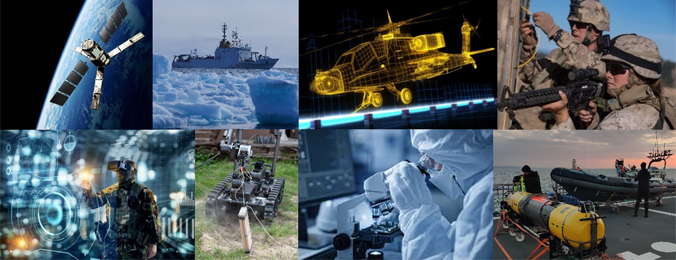Science and Technology Organization
NATO's Science and Technology Organization (STO) delivers innovation, advice and scientific solutions to meet the Alliance’s ever-changing needs. It ensures NATO maintains its military and technological edge to face current and future security challenges.

- The STO is the world’s largest collaborative research forum in the field of defence and security.
- It supports the defence and security posture of the Alliance and its partners through scientific and technological research.
- It nurtures a community of more than 6,000 actively engaged scientists. The STO network draws upon the expertise of more than 200,000 people in Allied and partner nations.
- Its annual programme of work includes over 300 projects that cover a wide range of fields such as autonomous systems, anti-submarine warfare, hypersonic vehicles, quantum radar, and the impact of social media on military operations.
Main tasks and responsibilities
The STO generates and exploits a leading-edge science and technology programme of work, delivering timely results and advice that advance the defence capabilities of Allies, partners and NATO in support of the core tasks of collective defence, crisis management and cooperative security.
It also supports decisions made at both national and NATO level by providing advice to the North Atlantic Council and national leadership.
The STO achieves its mission by nurturing a community of more than 6,000 actively engaged scientists. The STO network draws upon the expertise of more than 200,000 people in Allied and partner nations.
Structure
The STO is governed by the NATO Science and Technology Board (STB). The Board administers the STO’s scientific and technical committees and its three executive bodies: the Centre for Maritime Research and Experimentation (CMRE) in La Spezia, Italy; the Collaboration Support Office in Paris, France; and the Office of the Chief Scientist at NATO Headquarters in Brussels, Belgium.
The Chief Scientist is the chairman of the STB and the senior science advisor to the North Atlantic Council.
The scientific and technical committees, composed of members from national and NATO bodies, direct and execute NATO’s collaborative science and technology activities.
The CMRE organises and conducts scientific research and technology development, centred on the maritime domain, delivering innovative solutions to address the Alliance’s defence and security needs.
The CMRE conducts hands-on scientific and engineering research for the direct benefit of both NATO and such customers as research entities and industry. The Centre operates NATO’s two research vessels that enable science and technology solutions to be explored and developed at sea. This allows unique and specialised research to be conducted in core areas of interest for NATO. The CMRE’s engineering capability enables rapid exploitation of concept prototypes for use in trials and military experiments. The Centre also has a scientific and engineering knowledge base composed of a dedicated science platform and publications, for use across NATO.
Evolution
To safeguard Alliance freedom and shared values, it is of critical importance for NATO and its partner nations to maintain the edge in defence and security. Discovering, developing and utilising advanced knowledge and cutting‑edge science and technology is fundamental to maintaining the technological edge that has enabled Alliance forces to succeed across the full spectrum of operations over the past decades.
The STO was created through the amalgamation of the Research and Technology Organization and the NATO Undersea Research Centre. These bodies were brought together following a decision at the 2010 NATO Summit in Lisbon to reform the NATO agency structure.
The STO, along with its predecessor organisations, has been instrumental in enabling that success, both within the nations and for NATO itself.
By providing a critical venue for knowledge development and delivery, the STO remains committed to its foundational principle: bringing together subject matter experts from across the scientific spectrum with military end users in order to inform decision‑makers on emerging challenges and opportunities, and to ensure the technological advantage of the Alliance and its partners.
